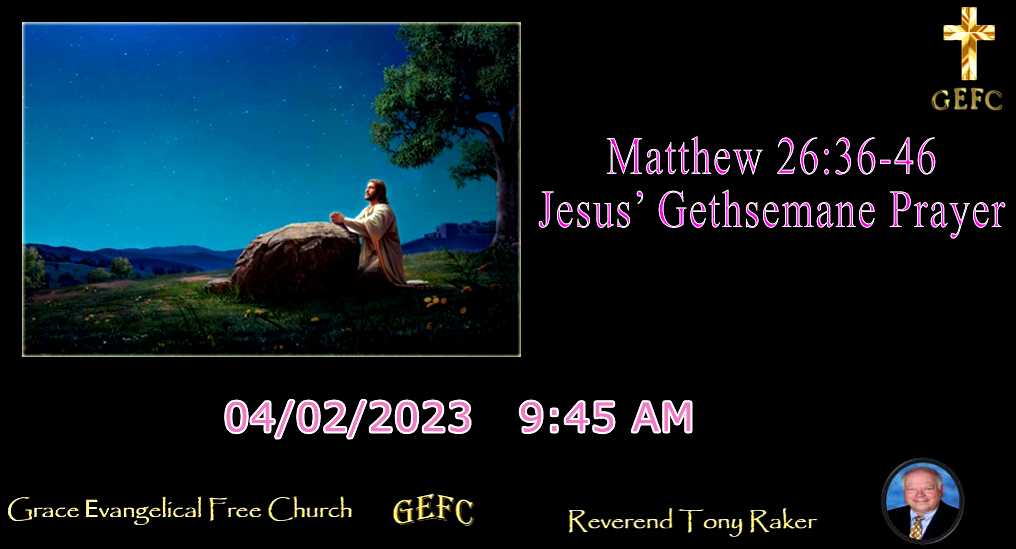
There are two places which we should frequently visit in thought and prayer: first, “the place called The Skull” (Luke 23:33), and then “a place called Gethsemane” (Matthew 26:36). When we visit Gethsemane, we will be ready to appreciate the significance of Calvary.
Matthew 26:37b: “he began to be sorrowful and troubled.”
- Grammatical Usage: “sorrowful” or in the Greek, “lupeó” meaning, “grieved”; “troubled” or “adémoneó” meaning, “misery”.
- Literal Interpretation: “he began to be in terrible distress and misery.”
- Contextual/Comparison: God keeps His Word: God continually uses His Word. Gethsemane (which means ‘the oil press’) was a garden situated on the Mount of Olives. As we come here we see the Savior with His disciples, let us center our thoughts on the Savior and notice in particular seven of His attributes in Matthew 26:36-46 and in the parallel passages in Mark 14:32-42 and Luke 22:39-46:
- THE SAVIOUR’S TRUE HUMANITY
This is brought before us in Matthew 26:36-38 and in Luke 22:43. The fact that our Lord was “sorrowful and troubled”, and that “an angel from heaven appeared to him and strengthened him”, emphasizes the fact that He really was a man. Our Lord was and is God, but it was as “the man Christ Jesus”, the representative man, that He entered Gethsemane and suffered on the cross as our substitute. His favorite title for Himself was “the Son of Man”, and this emphasizes His true humanity. He was the perfect man, having a human ancestry, a human appearance, a human constitution and human infirmities. He was tempted, He needed to pray and He knew human suffering.
- THE SAVIOUR’S UTTER HUMILITY
In Matthew 26:39 we are told that when Jesus prayed He “fell with his face to the ground”; Luke 22:41 says, He “knelt down and prayed.” There is no contradiction here, for these statements must be taken together, but how this attitude of the Savior rebukes our casual irreverence! Our Lord, though He was God made flesh, the Son of His Father in a unique sense, got down low at His Father’s feet (Matthew 6:9). We must not be careless or irreverent in the way we approach or address God.
- THE SAVIOUR’S COMPLETE DEPENDENCE
Although He was so great and so glorious, yet while He was here as man He never once acted independently of the Father, and Matthew 26:39 emphasizes this fact (compare Luke 22:42; study carefully John 5:17-20; 5:30-31 and 7:15-16).
- THE SAVIOUR’S GREAT FAITH
This is brought out in Matthew 26:39 and Mark 14:36, where we hear the Savior saying, “Abba, Father, everything is possible for you.” Here we see our Lord’s absolute confidence in the power of God. Some have dared to suggest that here in the garden the Savior’s faith wavered, but this is not true. He was completely aware of the purpose for which He had come into the world, and He was ready to complete and finish the work He had come to do (Matthew 26:46 and Hebrews 5:7).
- THE SAVIOUR’S TENDER COMPASSION
Notice this in Matthew 26:40-41. Was our Lord rebuking the disciples? It is possible, and there was certainly an element of disappointment in His words; but most of all there is the evidence of His love and understanding of the agony and suffering which lay ahead of them. We notice that in the midst of His own awful ordeal He showed such loving care for the needs of His friends (Mark 14:38), and that He was not asking prayer for Himself; He was asking His disciples to pray for themselves, as if He said to them, “I know what you will have to suffer, and I want to prepare you.”
- THE SAVIOUR’S AWFUL AGONY
How moving it is to read Matthew 26:37-39, then to read Mark 14:33-34 and 36 ( compare Luke 22:44 and Hebrews 5:7). The Savior’s agony was intense, even to the point of physical exhaustion (Luke 22:43-44). Why did He experience such anguish at the thought of His approaching death? It was because of the ingredients of the “cup” which He had to drink if sinners were to be saved (Matthew 26:39). The “cup” was a metaphor of the judgment of God which was to fall on the sinless Savior as He bore our sin (Isaiah 53:6); as He took away our sin (John 1:29); as He became sin for us (2 Corinthians 5:21). And as the Savior anticipated this and the rejection which He would experience (Matthew 27:46), He was overcome with the anguish of it.
- THE SAVIOUR’S PERFECT SUBMISSION
There was no conflict between the Savior’s will and the Father’s will (Matthew 26:39, 42 and 44-46)). After Jesus had said, “Yet not as I will, but as you will”, He turned to His disciples and said, “Rise, let us go!” Where? To Calvary. Consider the following:
(1) Prayer is the best practical remedy which we can use in times of trouble (Mt. 26:36).
(2) Some prayers we can only offer alone (Mt. 6:6; 26:38-39).
(3) We too can come to God on the ground of an intimate relationship (Mt. 26:39; Mark 14:36).
(4) The supreme object in prayer and in all service is the will of God (Mt. 26:39; Acts 9:6).
(5) We are weak at the best of times and must therefore continually watch and pray (Matthew 26:41).
(6) The Lord Jesus will always gently rebuke our pride and self-confidence (Matthew 26:40; Mark 14:27; our Lord was addressing Peter who had been so boastful and self-confident – look up Matthew 26:33-35).
(7) We too enjoy the ministry of angels and the sufficiency of God’s grace (Luke 22:43; Hebrews 1:13-14; Psalm 91:11-12; 2 Corinthians 9:8; 12:9
- Conclusion: Jesus will meet you in your Gethsemane.
